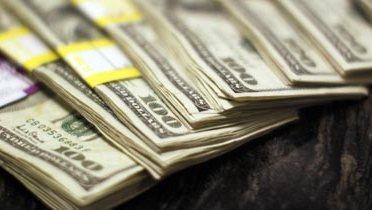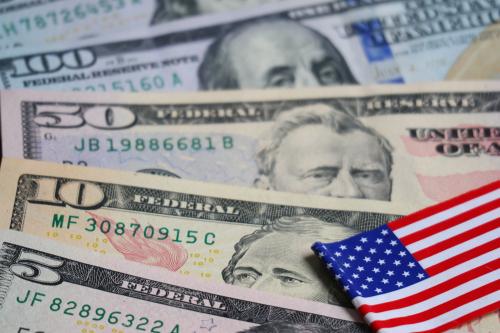Once the dust settles from the economic crisis of 2007-2009, we are likely to enter a period of new normality, with lower household debt, higher personal savings, and less consumption as a share of Gross Domestic Product. The effects of this transition will ripple through both the domestic and the international economy. At home, some of our bloated retail infrastructure will disappear as businesses shift their focus to producing more for export. Abroad, countries that have depended on exports to fuel economic growth will have to shift toward domestic consumption, which means lower savings rates and a diminished appetite for U.S. government debt, putting pressure on U.S. fiscal policy.
While the broad direction of change is clear, the magnitude is not. To get a sense of the range of possibilities, it’s useful to take a long view.
Personal consumption. Nothing has defined the past decade more than the orgy of personal consumption. From large flat-screen TVs and i-phones to furniture and foreign cars, Americans spent as though there were no tomorrow, until tomorrow came.
It’s easy to forget how unusual this period was. Once the pent-up demand from the World War Two era of austerity subsided, personal consumption was remarkably stable for three decades, averaging about 62 percent of GDP between 1951 and 1980. And then the great shift began. Personal consumption rose to 64.6 percent in the 1980s, 67.3 percent in the 1990s, and an astounding 69.8 percent between 2001 and 2008.
|
TABLE 1 |
|||
|
PERSONAL CONSUMPTION AS A PERCENTAGE OF GDP, 1951-2008 |
|||
| Period |
Average |
Beginning |
End |
| 1951-1960 |
62.3 |
61.5 |
63 |
| 1961-1970 |
61.8 |
62.8 |
62.4 |
| 1971-1980 |
62.5 |
62.3 |
63 |
| 1981-1990 |
64.6 |
62 |
66.1 |
| 1990-2000 |
67.3 |
66.4 |
68.6 |
| 2001-2008 |
69.8 |
69.5 |
70.1 |
This surge in consumption could not last, because it depended increasingly on unsustainable increases in household debt and declines in personal savings. And most Americans understand this: across the income spectrum, and despite improving consumer confidence, huge majorities now report that they are watching spending very closely and cutting back on how much they spend each week.
Household debt. Between the mid-1960s and the mid-1980s, household debt was remarkably stable, varying between 44 and 50 percent of GDP. From 1985 until 2008, that figure rose almost without interruption, topping out at 102 percent in the first quarter of 2008. This seemed sustainable because household net worth relative to GDP also rose sharply, boosted by higher prices for stocks and housing. When both of these markets collapsed, households were left with debt burdens much higher than they could sustain, making debt reduction a matter of immediate urgency.
Here’s one example. For most of the 1990s, homeowners extracted relatively modest amounts of equity (less than $200 billion per year) from their homes. By 2006, however, this had soared to an annual rate of more than $1 trillion. As the housing market turned sharply down, the trend of equity extraction reversed itself, hitting zero by the middle of 2008 and an annual rate of about minus $700 billion by the first quarter of 2009. (That means that homeowners are actually paying down their mortgages rather than using their homes as piggy-banks.) If this trend were to stabilize in a few years at roughly the level of the 1990s, resources available for personal consumption each year would be reduced by more than half a trillion dollars (roughly 5 percent) from the 2005-2007 levels. And this seems a reasonable estimate: according to the Case-Shiller index, inflation-adjusted home prices are now precisely where they were eight years ago, in June of 2001, as the boom got underway.
Personal savings. While there are different ways of calculating personal savings, they all tell roughly the same story: the savings rate averaged close to 10 percent of disposable personal income between 1965 and 1985 before entering a prolonged decline that brought the rate to below zero in 2005 and 2006. Nor did other sectors of the economy compensate for the collapse in personal savings: between 1985 and 2005, net private savings (businesses plus households) declined from 11 percent of national income to 3 percent, while net national savings (a comprehensive measure of savings by government, business, and individuals) went from 7 percent to zero.
It is not hard to understand why the personal savings rate declined as much as it did. The same factors—rising stock and housing prices—that encouraged households to take on more debt also made them feel wealthier, diminishing the felt need to save out of annual income. And families were wealthier, at least on paper: household net worth, which stood at about 3.5 times GDP in 1985, rose to more than 4.5 times GDP in 2005 before falling back sharply.
As the economic decline intensified, households began to save more. The personal savings rate, which averaged an anemic 1.8 percent of disposable income in 2007, averaged 2.6 percent in 2008 and 4.3 percent in the first seven months of 2009. Many economists believe that it will rise much more before plateauing. If the rate were to stabilize at 5 percent—roughly where it stood for most of the 1990s—households would have about $600 billion less available for consumption than if savings had remained at 2005-2006 levels.
All things considered, these projections of reduced household debt and higher savings suggest that personal consumption is likely to stabilize in the neighborhood of 66 to 67 percent of GDP—3 to 4 percentage points below its peak.
Reduced consumption, lower household debt, higher savings—this looks like a turn toward more balanced home economics, even a return of thrift. And it is good news, as far as it goes—not far enough, unfortunately. Using assumptions charitably described as optimistic, the Office of Management and Budget estimates that the federal budget deficit will average 5.1 percent of GDP throughout the next decade, more than enough to soak up household savings. If so, the private sector would have only its internally generated savings—about 3 percent of national income—available for investment from domestic sources, and our dependence on foreign providers of capital would continue unabated.
This is a prescription for slower U.S. growth in the coming decade. Here’s why: if major exporting nations respond to the diminished U.S. appetite for consumer goods by emphasizing higher public and private spending in their domestic economies, the amount available for lending to the U.S. will decline. Unless our demand for their capital shrinks correspondingly, interest rates are bound to rise. And that is never good for the long-term investment needed to sustain economic growth. Another possible response—downward pressure on the dollar—would tend to boost domestic prices, inflation, and interest rates as well. (Many economists believe that we’ll get a combination of these responses—less capital from abroad plus a weaker dollar.) In any event, the combination of continued U.S. government debt accumulation financed from abroad at higher long-term interest rates would mean earmarking a much higher percentage of our GDP to service the debt, leaving less to support our domestic standard of living.
The conclusion seems inescapable: we need a new era of public restraint, not just private thrift. Not immediately, of course: given the extent of the economic contraction and job losses, fiscal policy should probably remain expansionary through the end of fiscal year 2011. In the meantime, we should do nothing to make the long-term fiscal situation worse. (In particular, health reform should be genuinely deficit-neutral, without commandeering the resources needed for other purposes, including deficit reduction.) Once economic growth has become self-sustaining and the private sector’s need for capital returns to more normal levels, Congress and the administration will have to turn their attention to the difficult fiscal questions they have long evaded. And the president will have to explain to the American people why this shift, far from being a green-eyeshade exercise, is essential for our future prosperity.
The Brookings Institution is committed to quality, independence, and impact.
We are supported by a diverse array of funders. In line with our values and policies, each Brookings publication represents the sole views of its author(s).







Commentary
Op-edThe “New Normal” For the U.S. Economy: What Will It Be?
September 1, 2009